To the lighthouse
Visiting the French Atlantic coast, donkeys in trousers, Elliott Erwitt photographs, and first summer picnics
On a recent long weekend (one of the three long weekends in France in May!), friends and I headed to the city of La Rochelle on the French Atlantic coast. The weeks before had been unseasonably chilly and rainy, so the promise of summer was tantalizing, but also a bit dubious, and we packed our long pants and sweaters just in case. `
The three-hour, high-speed train ride from Paris whisked us through verdant countryside laced with canals. The area is known as the Marais Poitevin, or the ‘French Venice’ — though as one friend on the trip who is actually from Venice reminded us, it looks nothing like the real thing. The less-than-apt analogy notwithstanding, the area seems incredibly nice.
Upon arriving in La Rochelle, we realized that at least the three non-Italians in the group had erred far too much on the side of caution when packing — it was a sparkling, sunny day of 28 C (in the 80s F)! A few minute walk from the train station, during which we progressively peeled off multiple layers of clothing, already brought us to the historical harbor, the vieux port.
Originally a fishing village founded in the 10th century, in the Middle Ages, La Rochelle became the largest port city on the Atlantic. Facing the Atlantic, the port was guarded by two main towers: the 14th century Saint Nicolas Tower, named for the patron saint of sailors, and Chain Tower, whose chain could be drawn to close off and defend the harbor. During this time, La Rochelle played a major role in the salt and wine trade, and the port was also (soberingly) notorious for its involvement in the slave trade.
These days, its modern port, La Pallice, is the only deep water port of the French Atlantic coast.
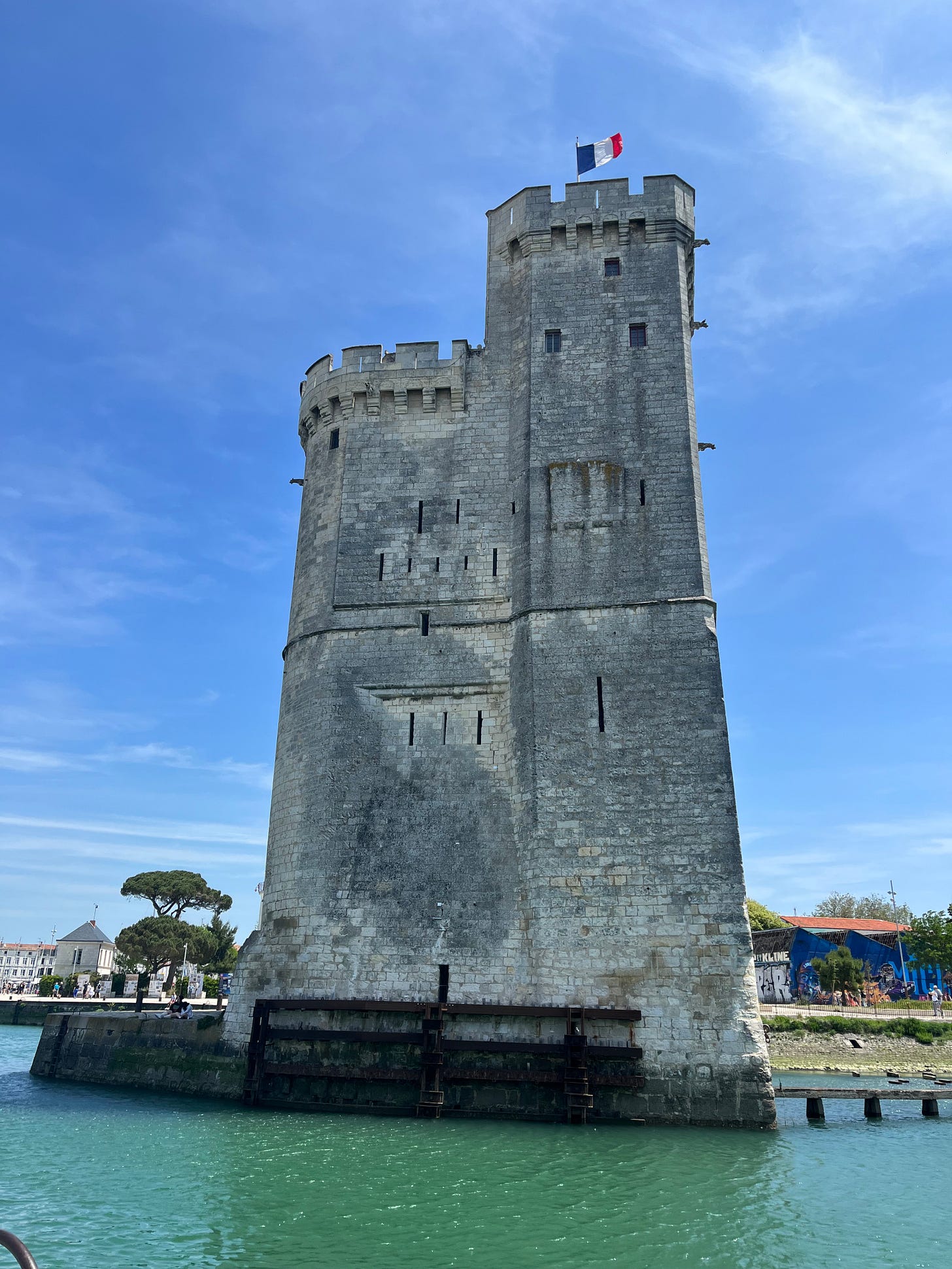
We spent Saturday afternoon exploring the old harbor, wandering to the beach and dipping our feet into the water to cool off, having apricot sorbet, and ducking in and out the shade in the narrow alleys of the very charming historic center. Before cooking dinner, we had a golden-hour apéro on top of the Chain tower at an outdoor bar, which was recommended to us by two wonderful friends who had just visited La Rochelle the previous year.
One of the other reasons we chose La Rochelle for the long weekend is that the city is connected to the island, Île de Ré, by a 3 km bridge completed in 1988, and on Sunday, we set out to explore the island.
For Americans, the Île de Ré is sometimes called the ‘Cape Cod of France’ for its laid-back but stylish lifestyle, myriad bicycles and bike paths, vast sandy beaches, possibilities of whale-spotting, lighthouses, and abundant seafood. (ChatGPT even gets this one right, if you ask it ‘what is the Cape Cod of France?’). For anyone knowledgable with the DC area, I would also add that it also has a flavor of Assateague island with its marshes and grasslands, though without the famous wild horses!
After picking up our rental car in La Rochelle, we started Sunday morning by crossing the bridge to the Île de Ré, and then driving to the furthest west part of the island, to the lighthouse of the whales, Le Phare des Baleines. (Why of the whales, you might ask? Apparently whales were, at least historically, prone to beaching on this coast...)

The view from atop the 57 m high lighthouse was spectacular! Looking to the ocean, you can also see the ‘lock’ structures that were traditionally used to catch fish — high tide would fill pools created by rocky sea walls, and as the tide went out, the fisherman would come to fish in these tidal pools. The practice apparently dates back six centuries, with a rule of not capturing the smallest fish to better respect the ecosystem.
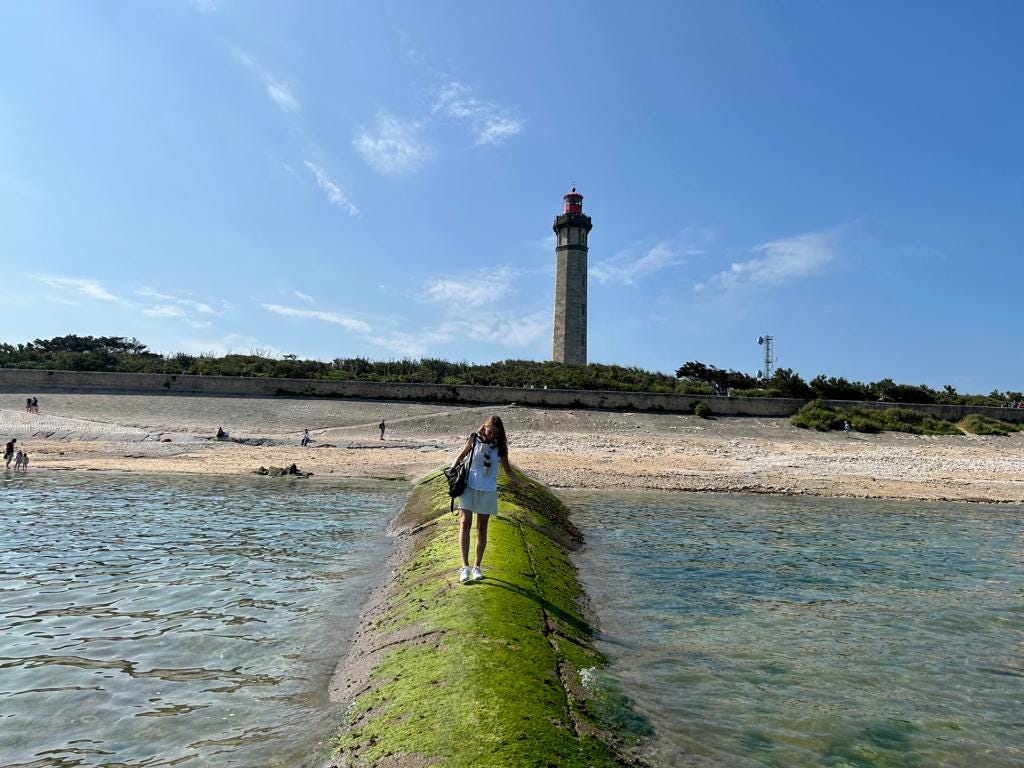
During a walk along the beach, we could also admire the the new storm walls, reconstructed after a deadly and devastating winter storm, Xynthia, that hit the island in 2010. In my current job, I work on modeling coastal flooding risk and its evolution under climate change for a large French bank, so seeing this storm and flood infrastructure in person was fascinating.
After this time at the seaside, we made our way further inland, as the island also harbors treasures by land — in particular its salty marshlands known as marais salants, with numerous migratory bird species, its grasslands, and its vineyards, all criss-crossed by kilometers of bike paths.
The Île de Ré is famous for its small-scale production of sea salt, harvested in these marshes, and we each picked up some glistening crystals — white gold! — to bring home. To diversify, salt farmers would also often produce wine and oysters, and these days, algae has joined the mix. Another agricultural product is salicorne: in English, ‘saltwort’ (doesn’t sound so appetizing) or sometimes called ‘sea asparagus’ (getting better). Salicorne is typically pickled in vinegar and used as a condiment … try it, if you can get your hands on some!
With all this talk of salt and saltwort, breakfast started to feel like a long time ago, and we made our way into the town of Ars-en-Ré for lunch. Walking through Ars, one appreciates why the Île de Ré is known for its typical green shutters, with every house indeed having shutters ranging from celadon to pine green. The green color has different origin stories, such as that the fisherman had leftover green paint from painting their boats, or that green paint was somehow more resistant to weathering by wind, water, and salt — compared to other colors like blue, which is the typical color along the rest of the Atlantic coast.
Speaking of colors, the village of Ars-en-Ré also has a striking two-colored (black and white) bell tower (pictured below), which apparently had the aim of being more easily recognized from the sea, before the construction of lighthouses.
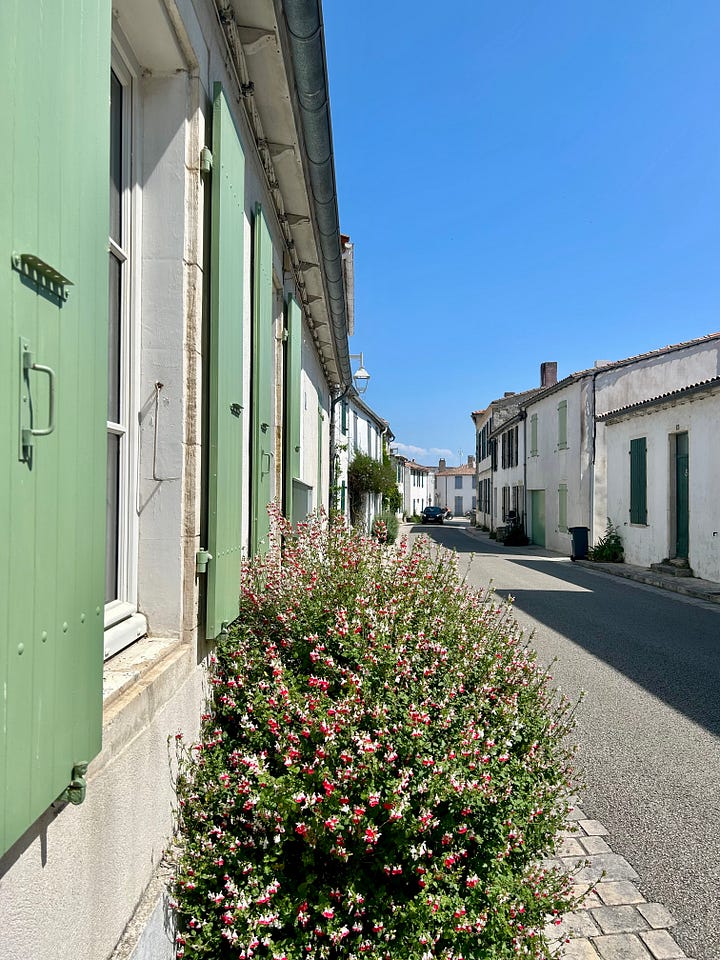
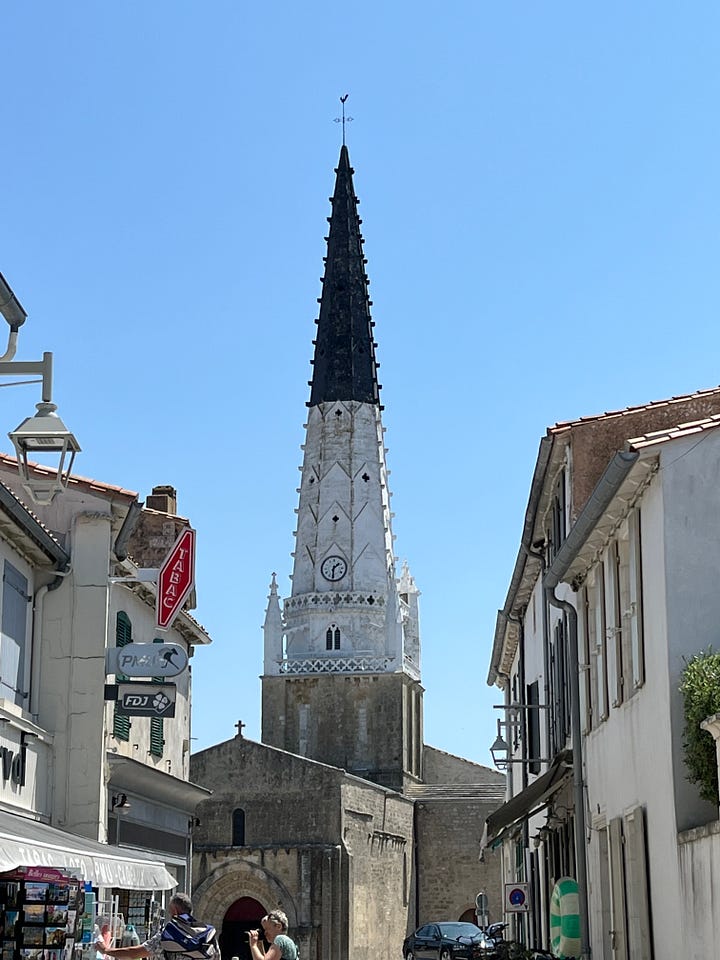
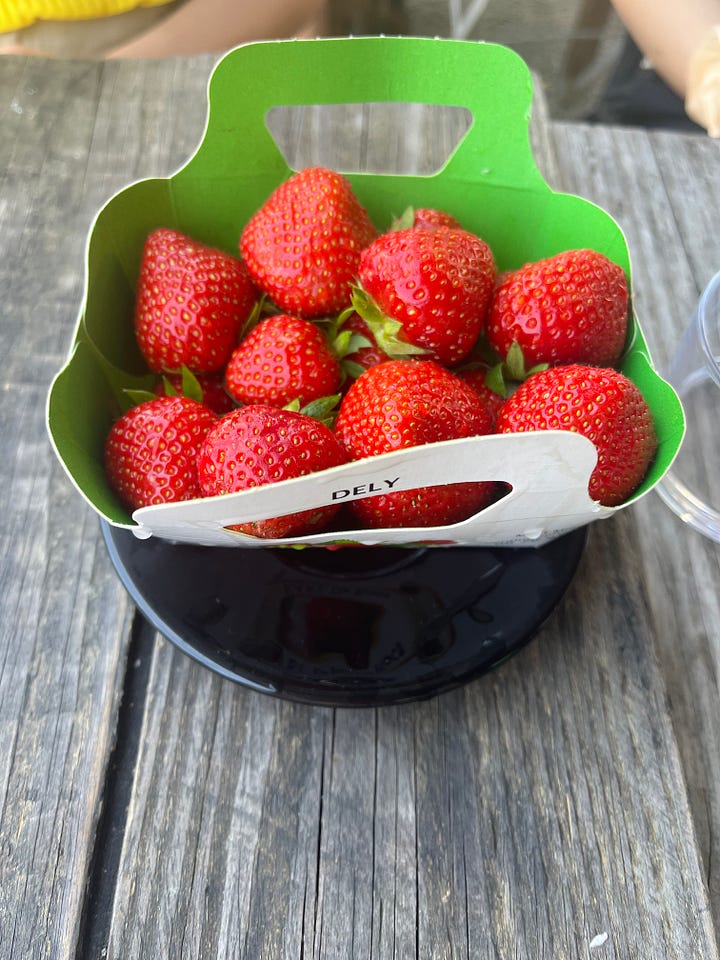
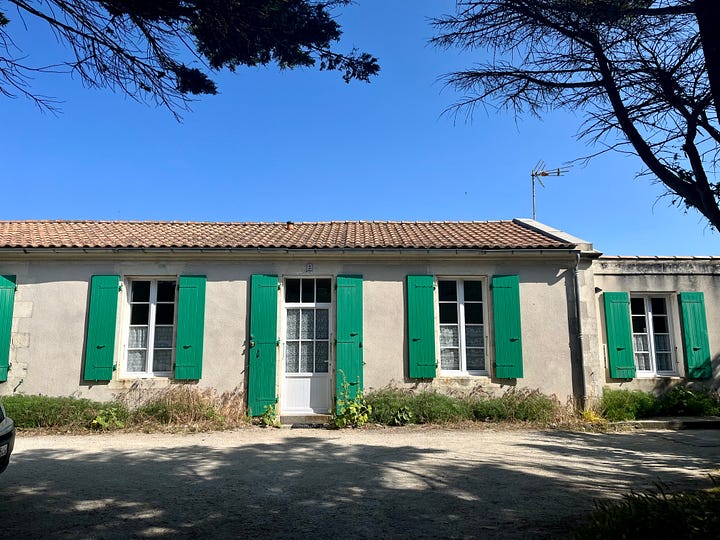
We had lunch at the restaurant La Tour du Sénéchal, which is a really lovely place recommended by a dear friend :) We couldn’t resist tasting some local oysters, and then had various main dishes, before finishing off with some local strawberries whose sweet, tart taste seems to come through on the photo… well worth the wait of (almost entirely) not eating strawberries out of season!
After lunch and a walk through town in the afternoon heat, we returned to the beach to cool off, this time on the southern coast of the island, at the Plage du Petit Sergent, wading through the tidal pools, just as the afternoon clouds were beginning to develop after a perfectly clear morning.
We couldn’t leave the island without visiting the main town of Saint-Martin-de-Ré, to see its historic harbor … and of course, as four mature adults do in the summertime, get some ice cream… for the latter, we went to a place called La Martinière right on the old harbor, where a literal horde of visitors already preceded us, but the line was shockingly efficient. Two ice cream flavors stood out: algal praline, and oyster …. ack. I did sample the algae + praline combo, which to my dismay didn’t taste at all of algae, but didn’t have the courage to sample oyster, and in the end, went with more standard (or boring) coconut and mango sorbets.
The day before, a friend, who is always down for an adventure, bravely ordered wood ice cream. (Yes, like a tree). This region of Charente-Maritime is known for producing cognac, so we thought maybe it would be some mix of cognac and the wooden barrel it is aged in … but no! The lady selling the ice cream also warned that it would just taste of ‘oak’. And indeed, it tasted just like how wood shavings smell … perhaps a PSA not to order this ice cream when you’re in the area — except for your pet chipmunk, that is.
Speaking of odd combinations, a typical product from the Poitou-Charente region that might, at first, seem strange is the tourteau fromagé (or fromager), which in standard French literally means ‘crab cheesecake’, perhaps reflecting its form and color that look somewhat like a crab. But actually, « tourterie » means ‘cake’ in the Poitevin regional language, so it is all very simple in the end…
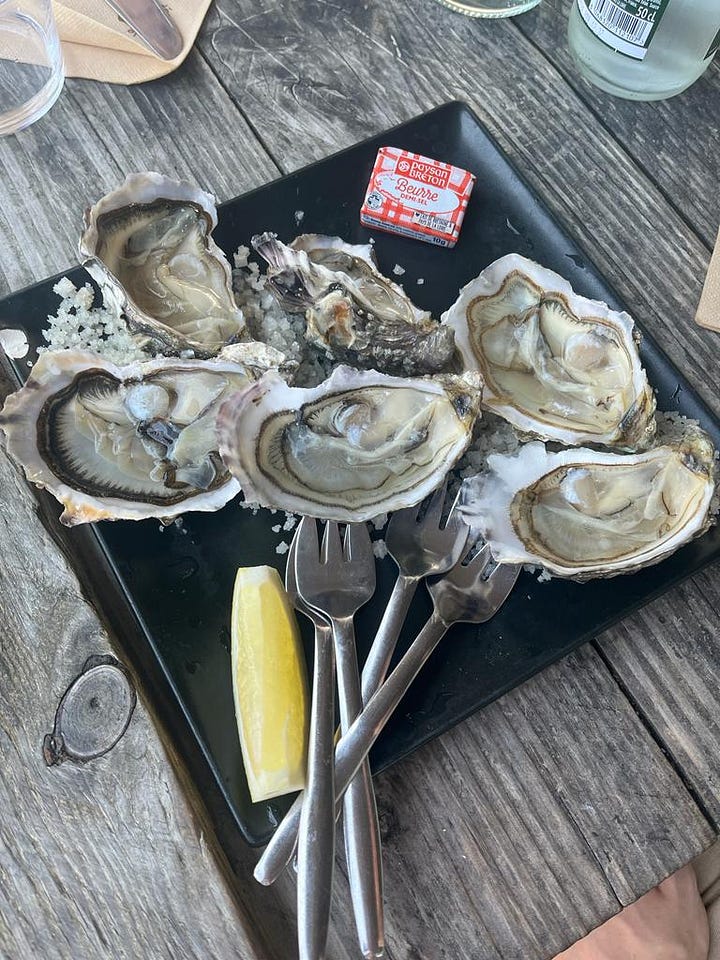
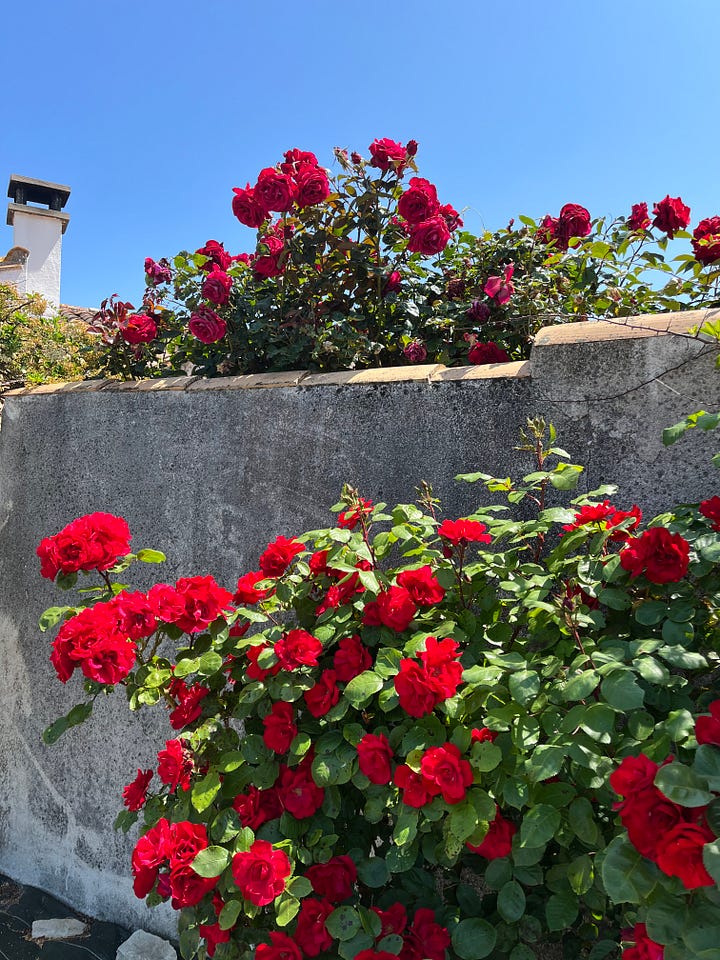
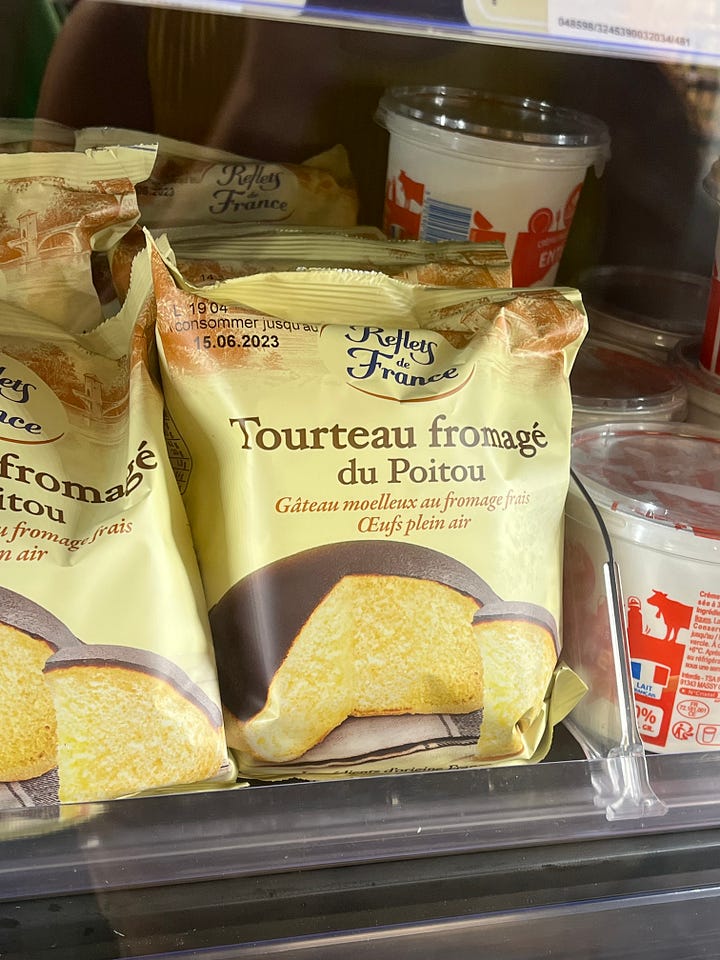
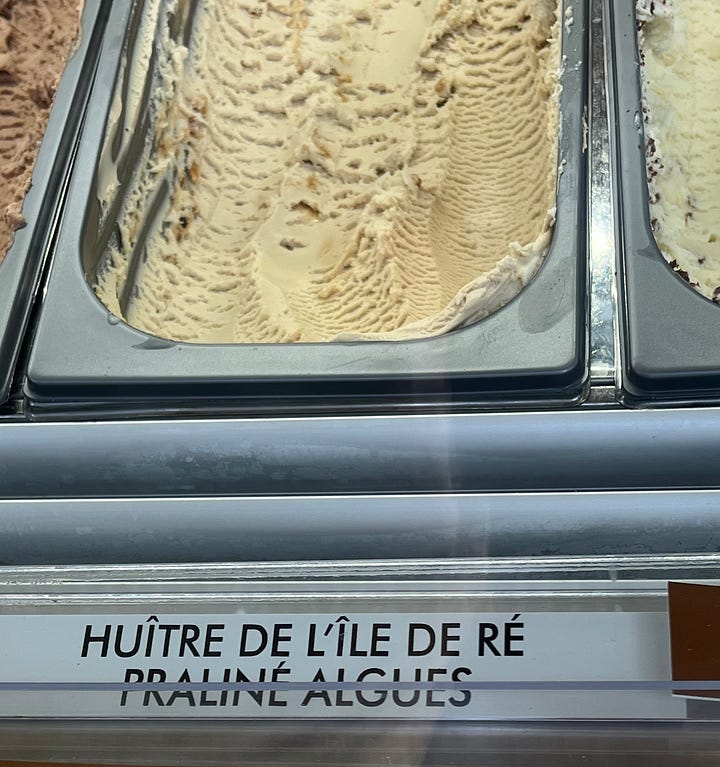
These products aside, the most surprising thing we encountered was donkeys, wearing trousers (les ânes en culotte)! At first, we thought, how sad, the donkeys are dressed in pants so that tourists will take photos of them … until we learned that traditionally farmers put pants on their donkeys to protect their legs from mosquito and other bug bites during long days working in the salt marshes, a realization which put our animal consciences at ease.
Aren’t they cute?! (I love donkeys…)
It was so special to spend this quality best friend time, and I can only recommend visiting La Rochelle and the Île de Ré … back in Paris, I was lucky enough that quality time continued, as one of my best friends stayed with me for one week, around the time that she was on tour in Paris with her choir. There were too many magical moments, big and small, to recount. Will instead just note that friendship that only grows despite time and distance is one of the most precious things in life, I think!
Before wrapping up, I’ll give a brief rundown of some recent Parisian highlights, including the Jardin du Luxembourg in pure summer bounty, such as with the speckled sunlight filtering through the tree canopy,
The evenings have been long and increasingly warm, making for colorful sunset walks and stops along the Seine after dinner,
And an exhibit I enjoyed tremendously recently was Elliott Erwitt’s photographs at the Musée Maillol, highlighting just how wonderfully his photographs juggle the playful and profound,
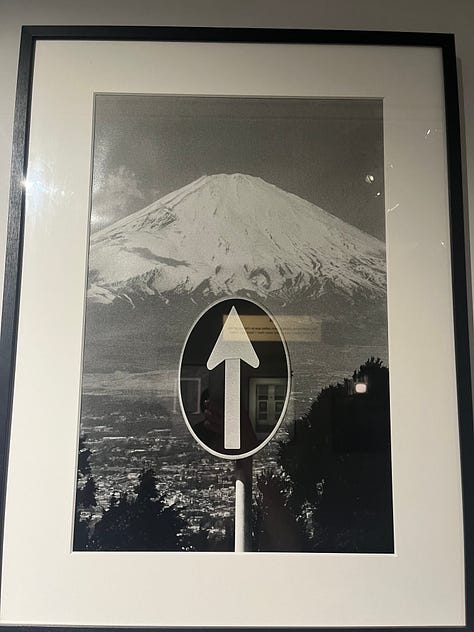
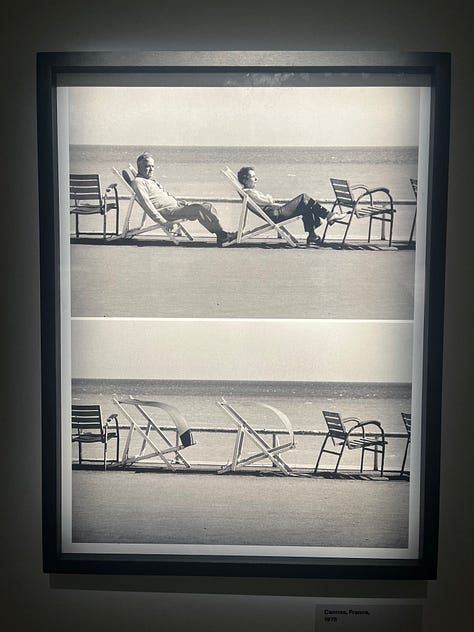
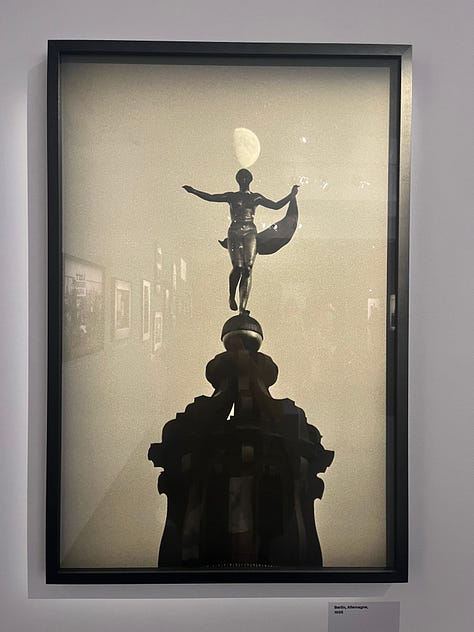
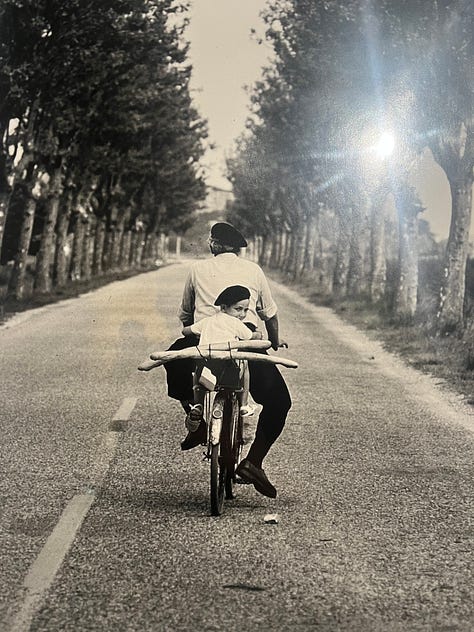
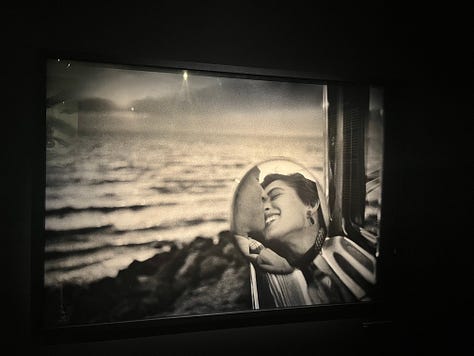
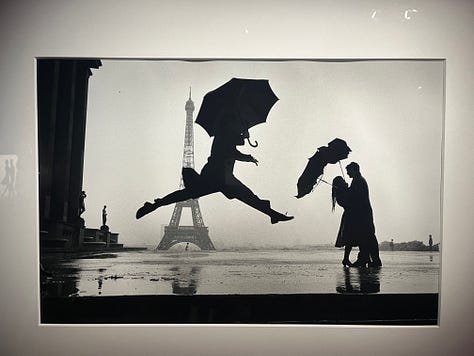
It is also worth googling Erwitt’s photos of dogs!
Lastly, a late afternoon and evening last weekend was optimally spent lounging and picnicking in the park of Buttes-Chaumont, in the northeast of the city, with the aromatic apricots, cherries, and strawberries now in season,
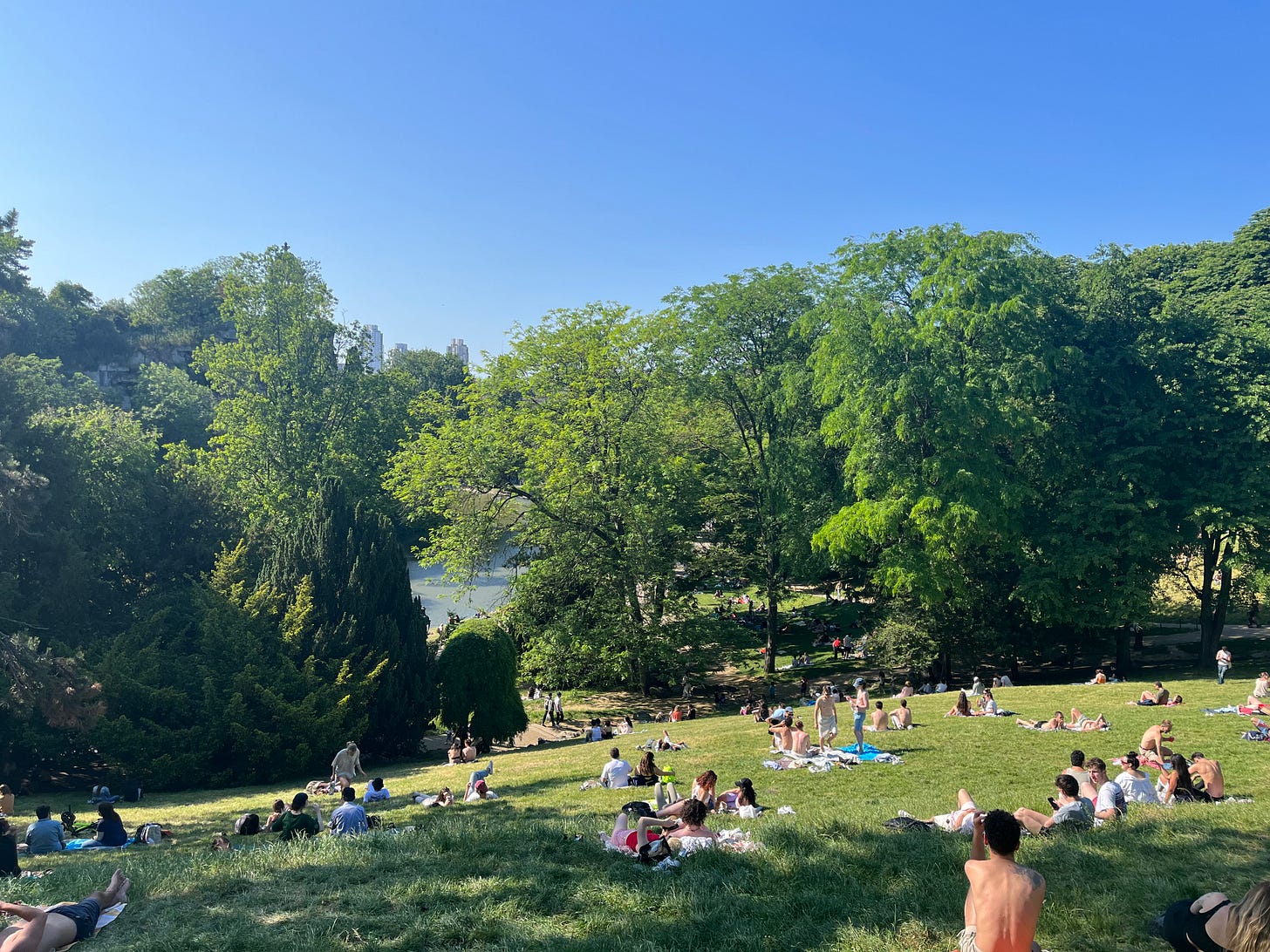
including appreciating a golden sunset.
Wishing everyone a wonderful start to the summer in your part of the world!
Anna Lea




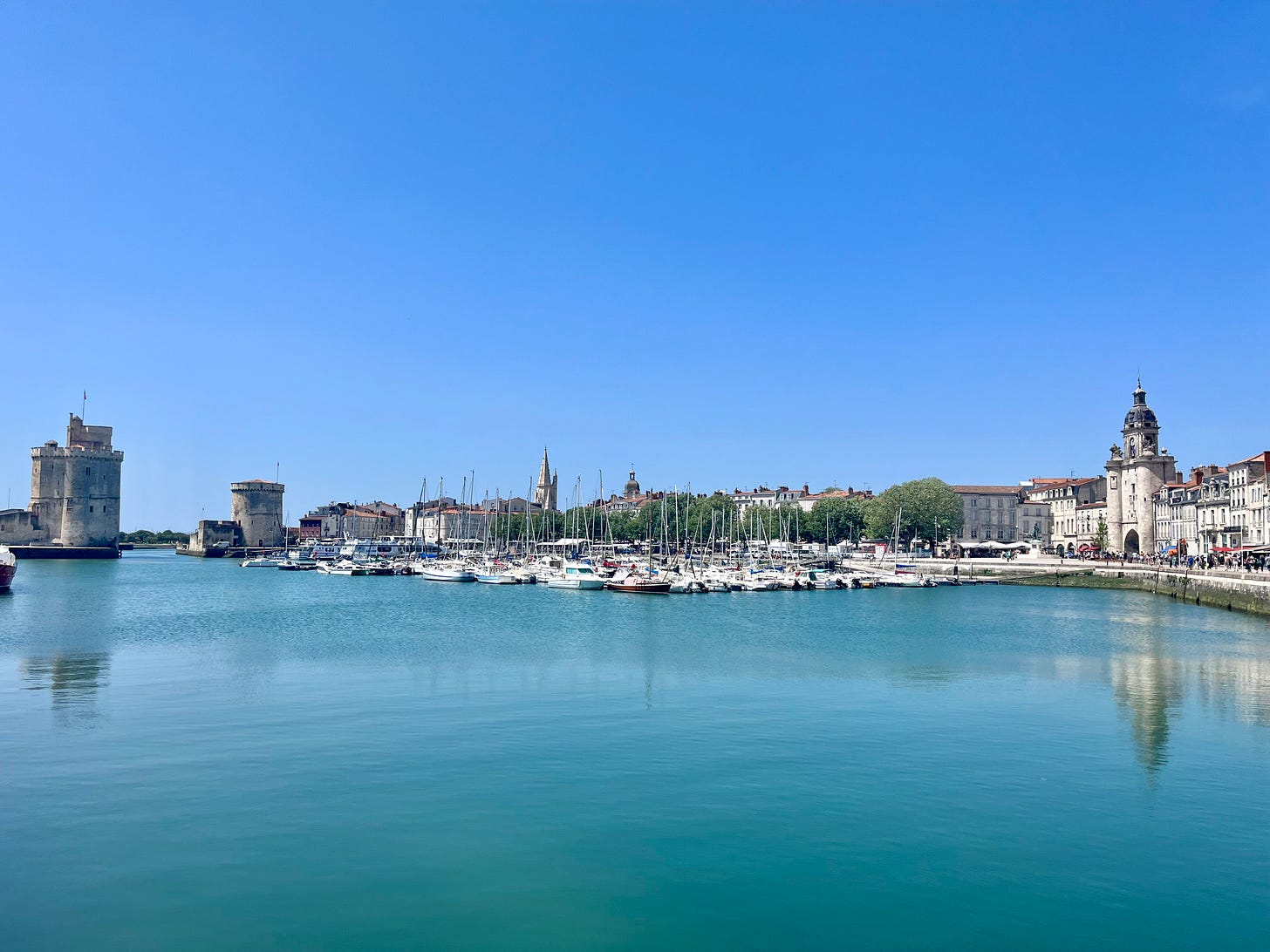
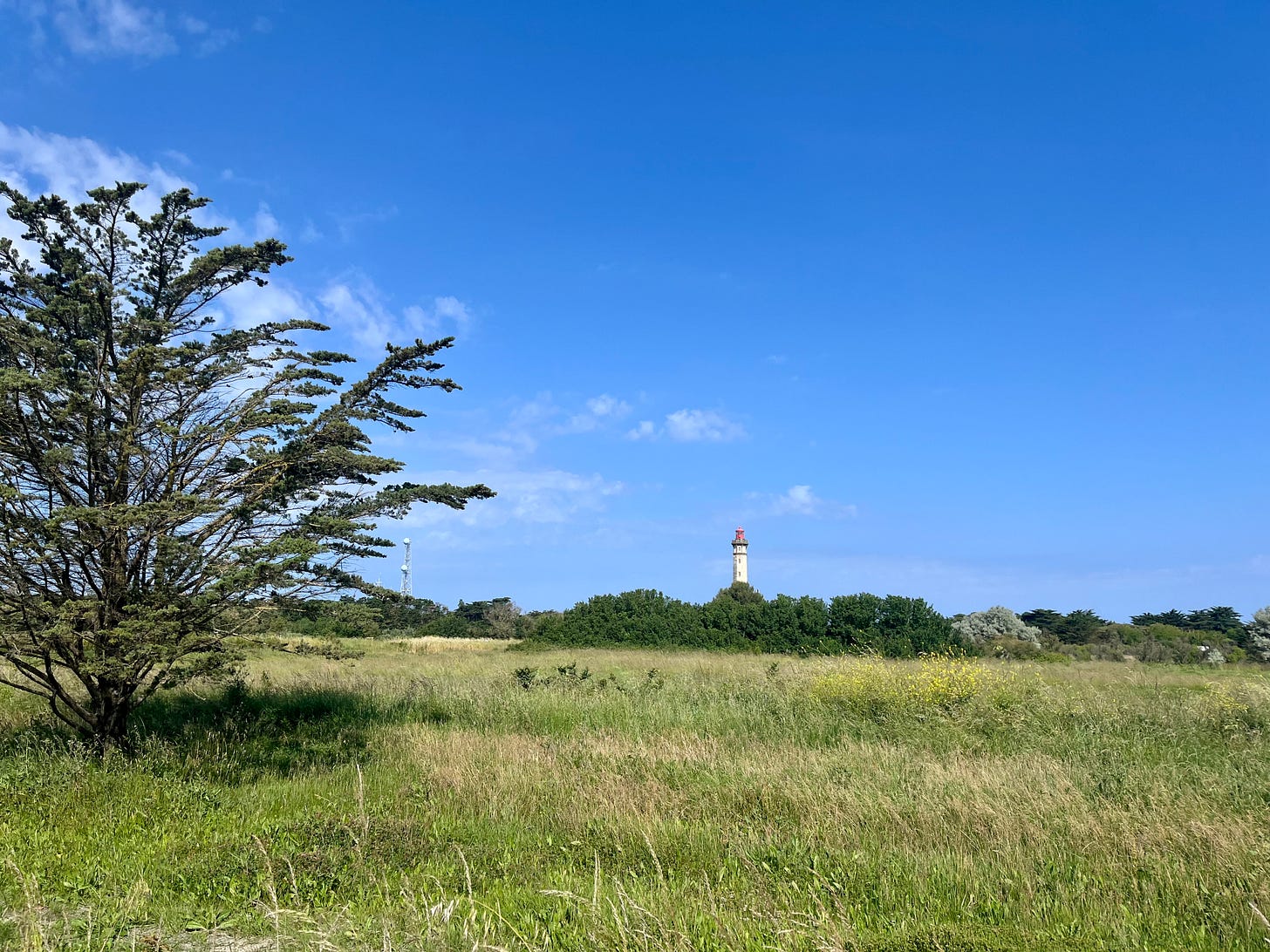
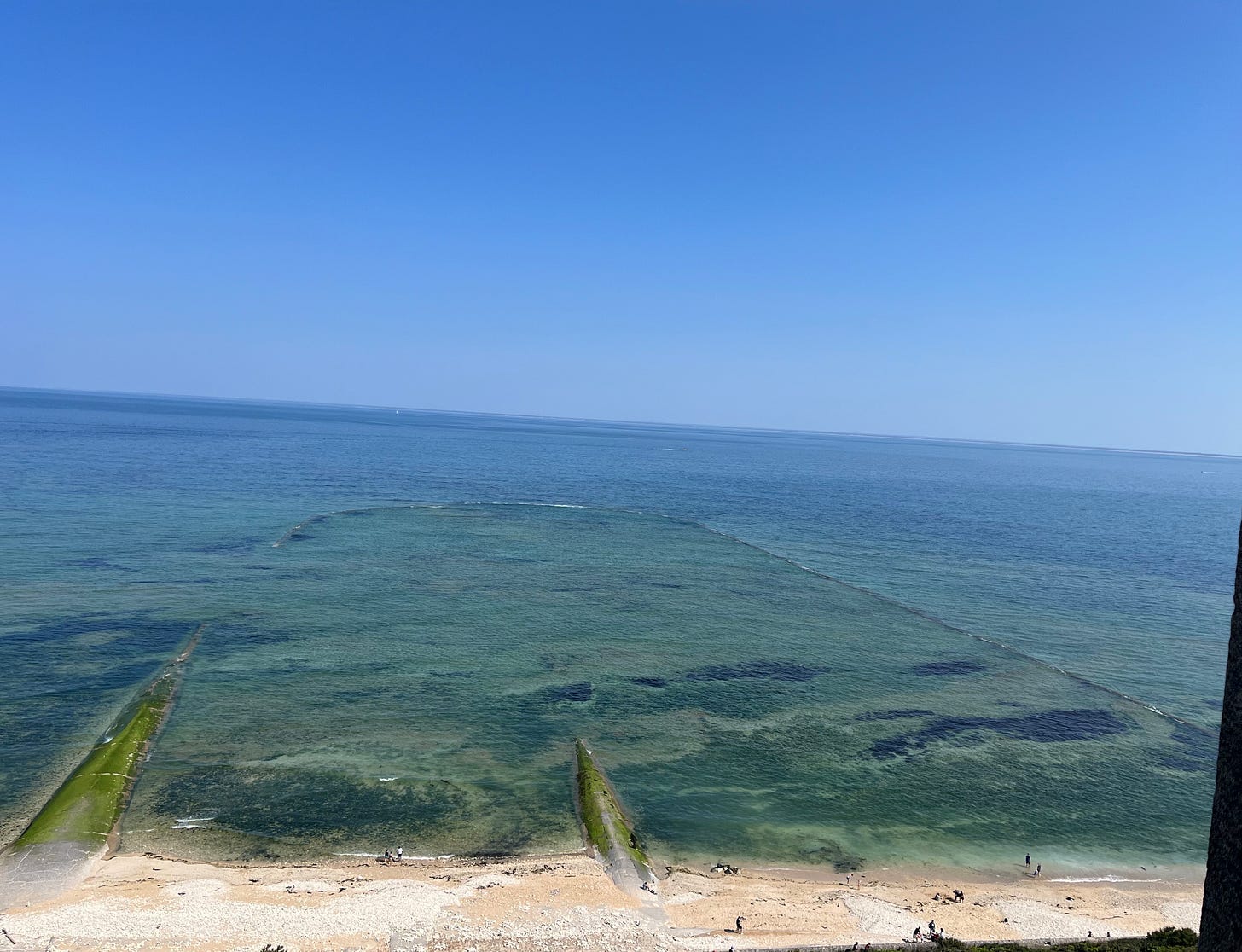
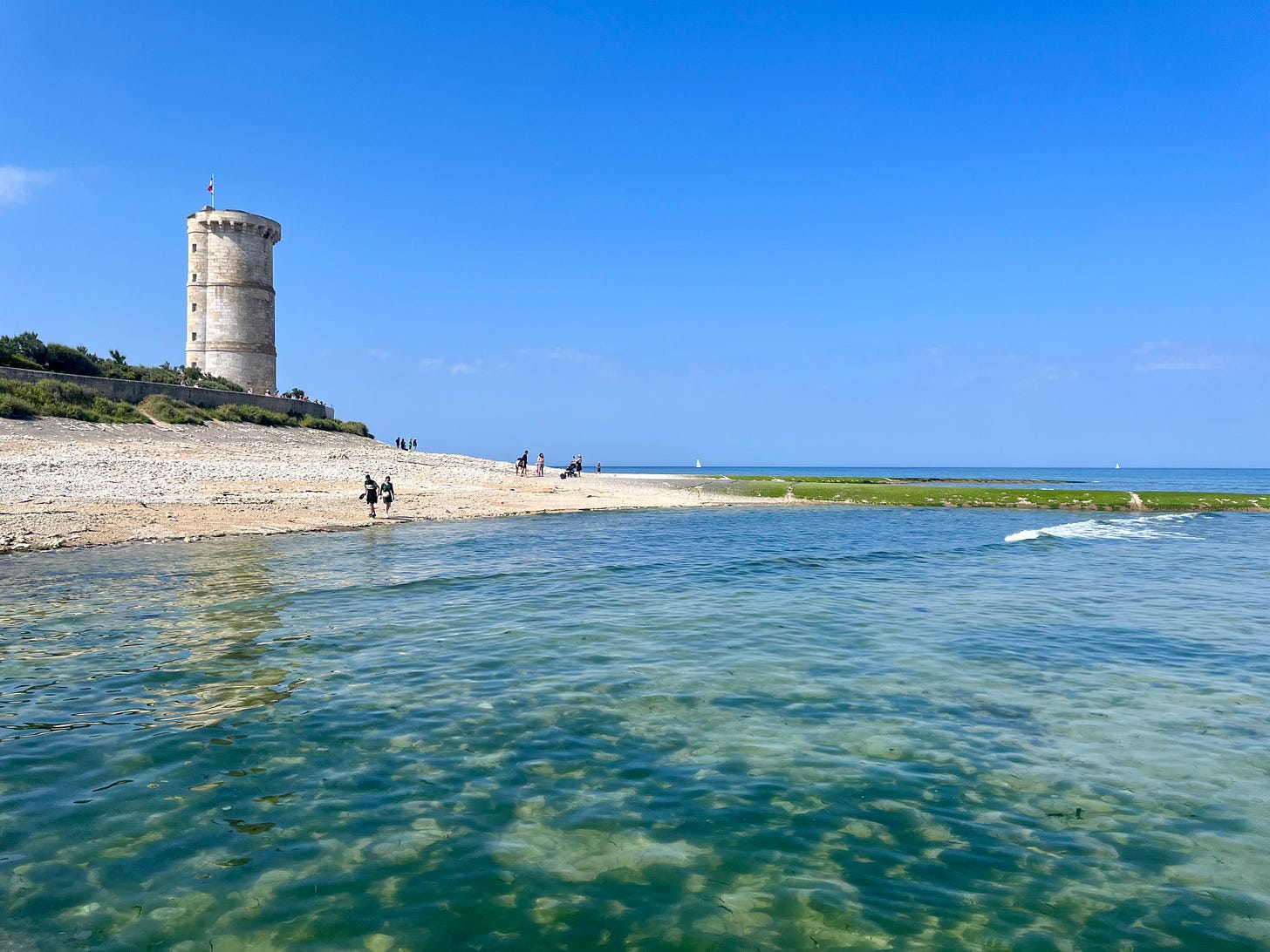

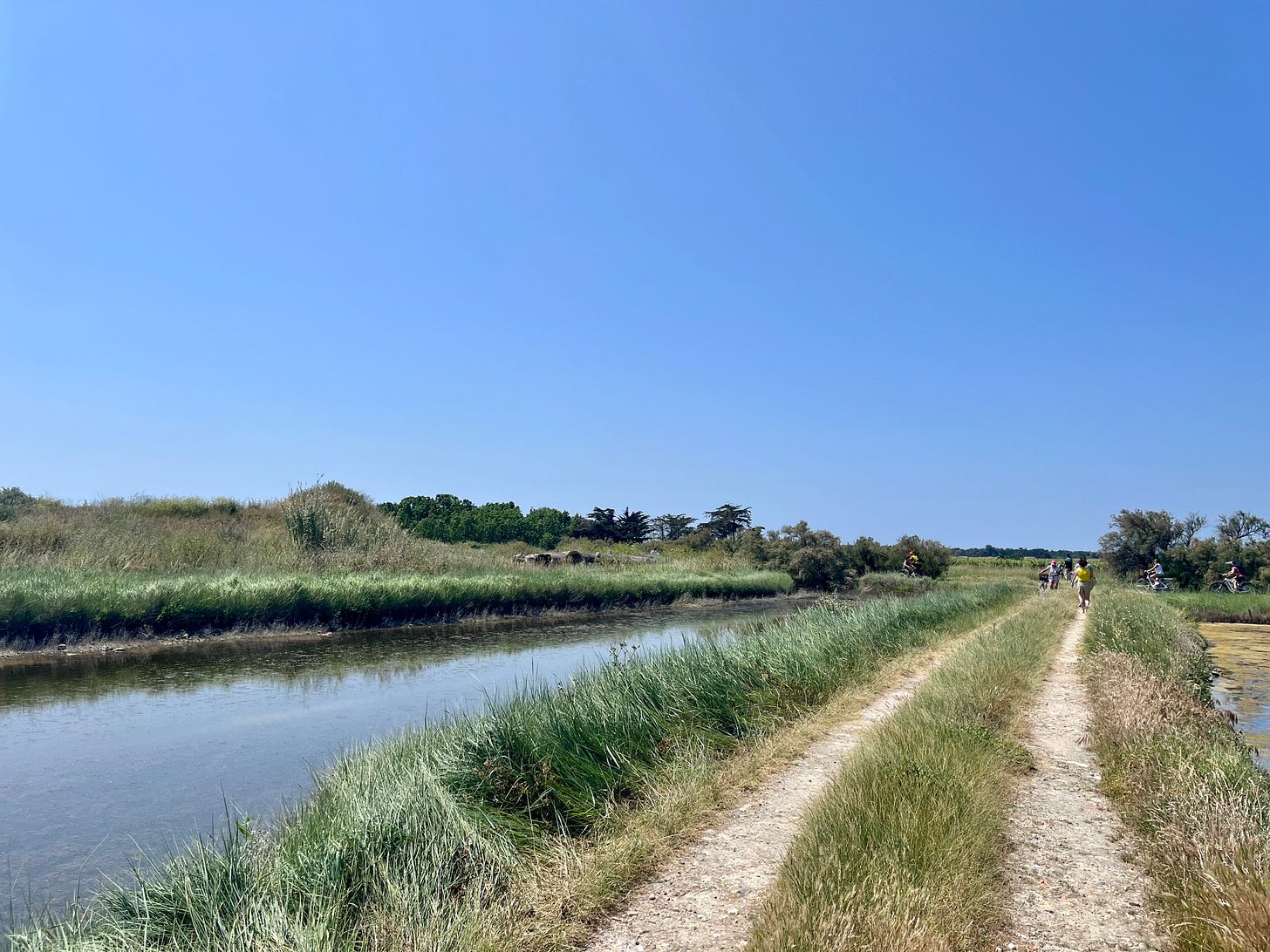
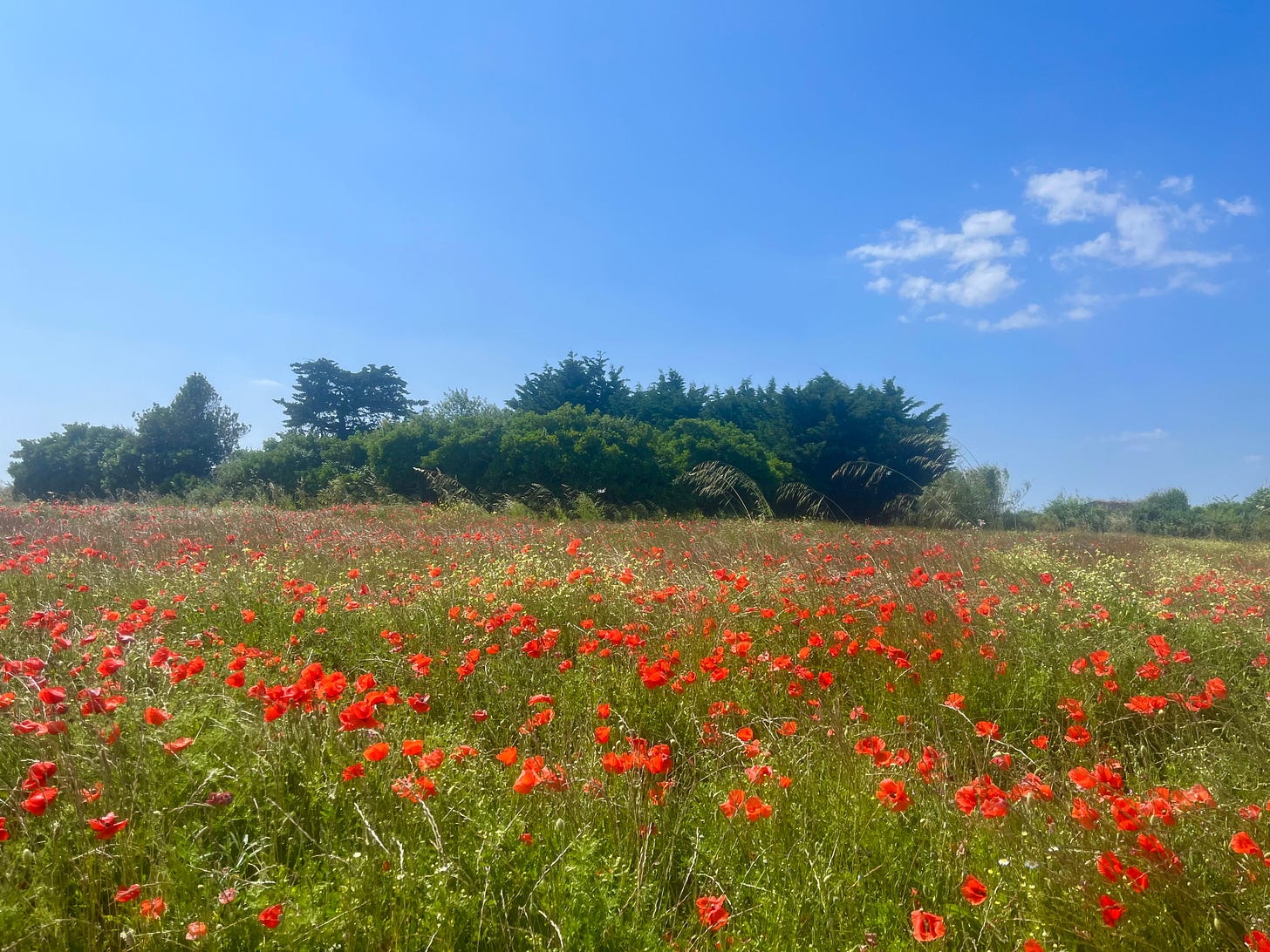
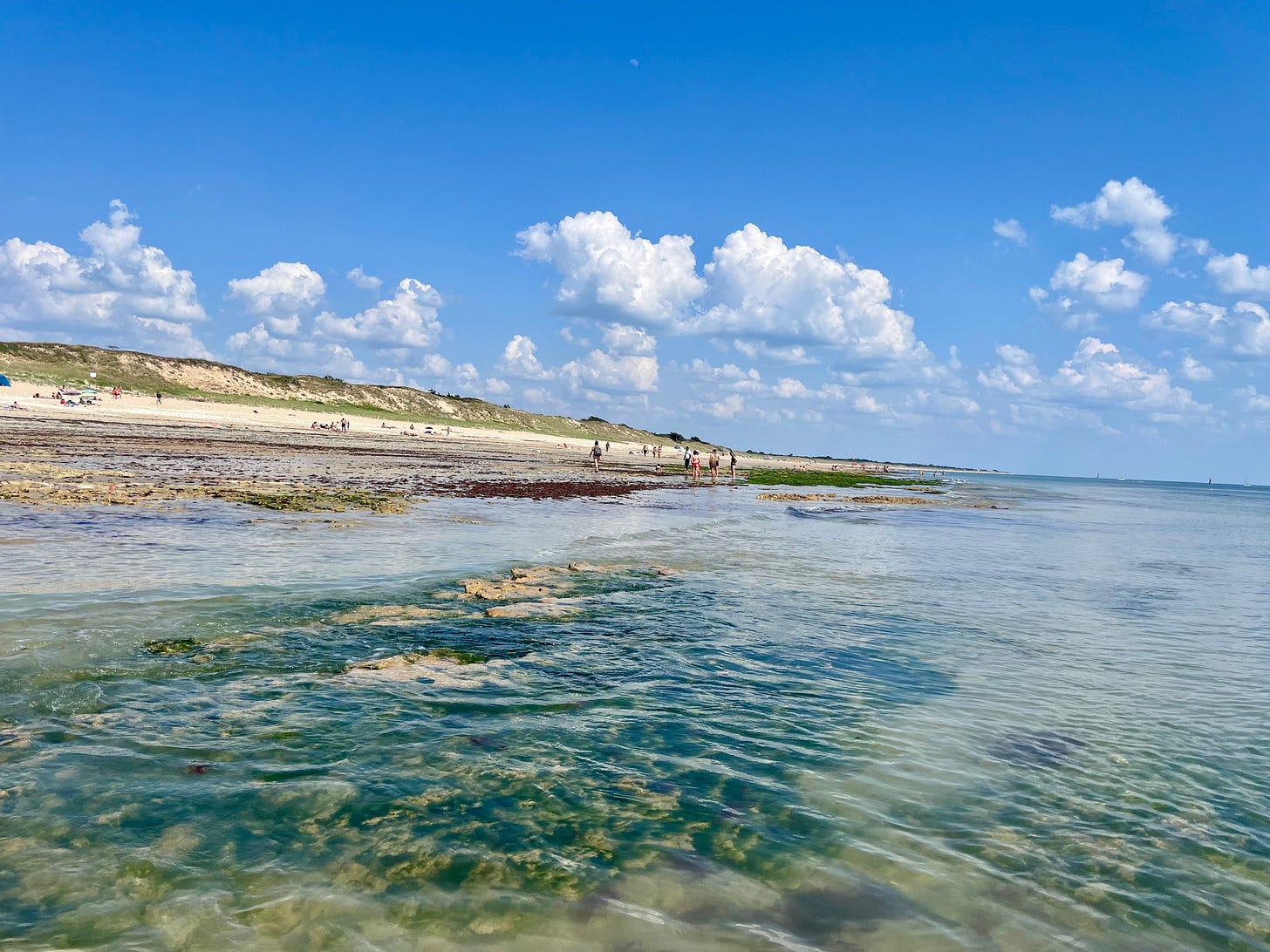

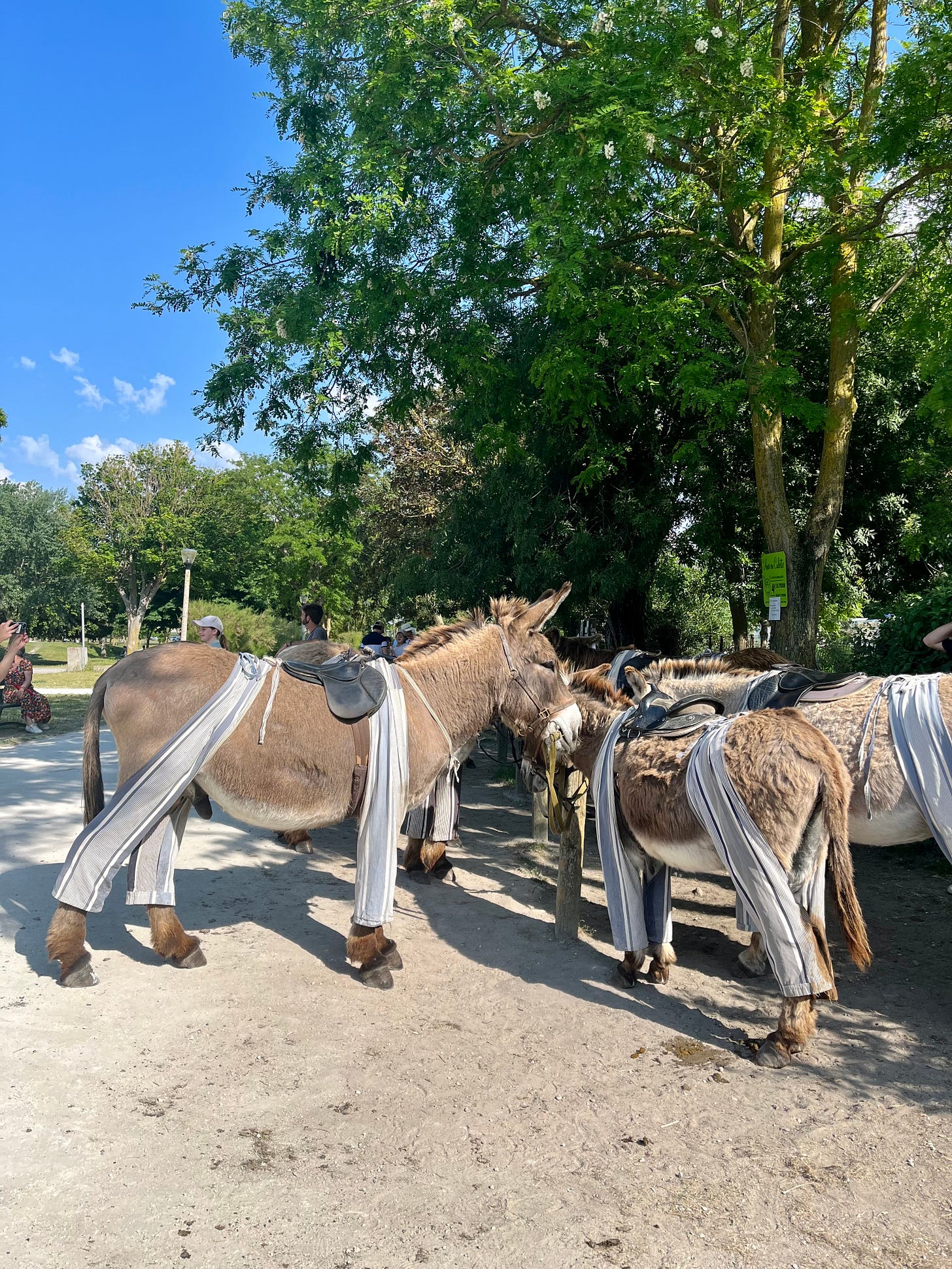
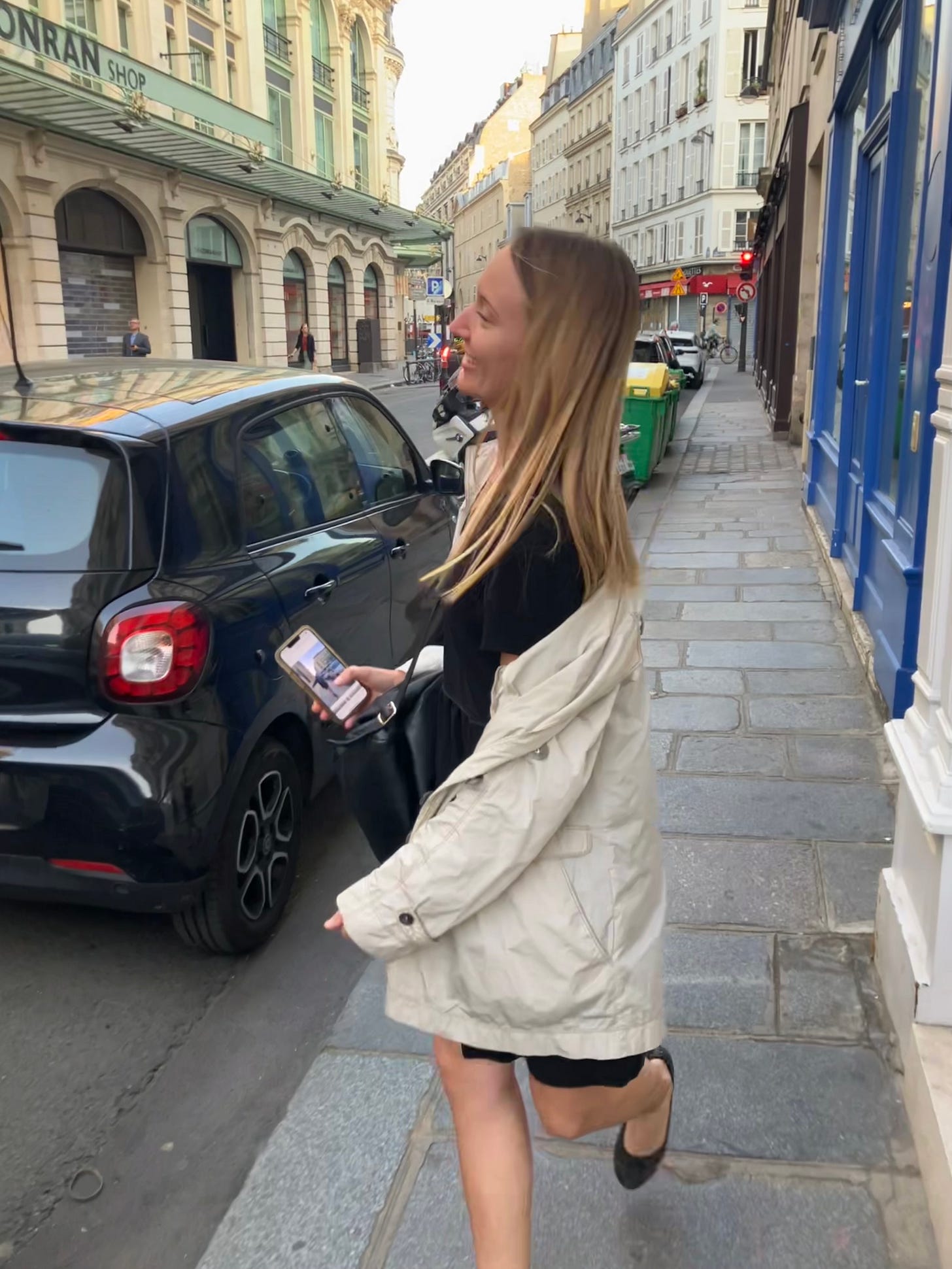
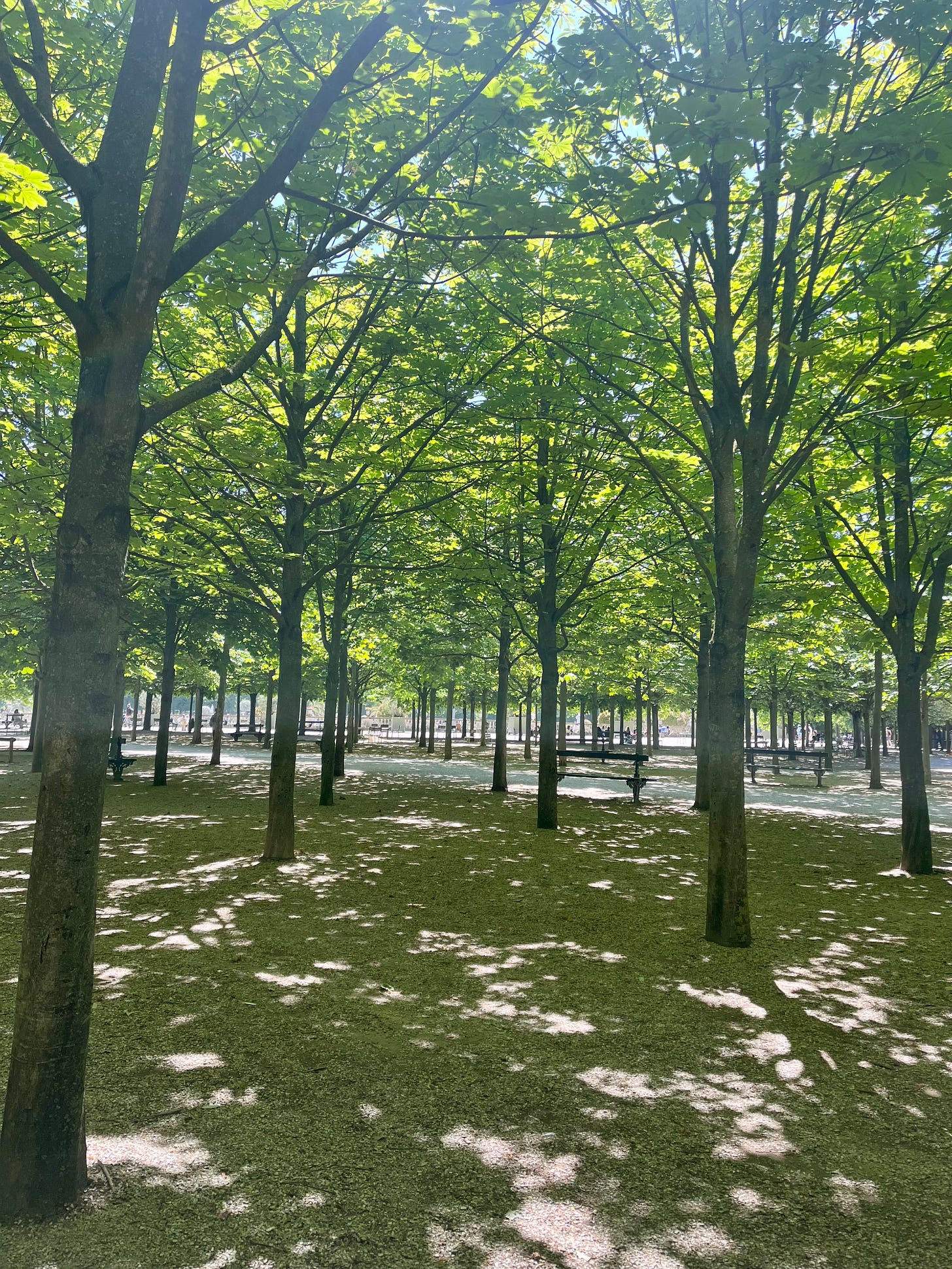
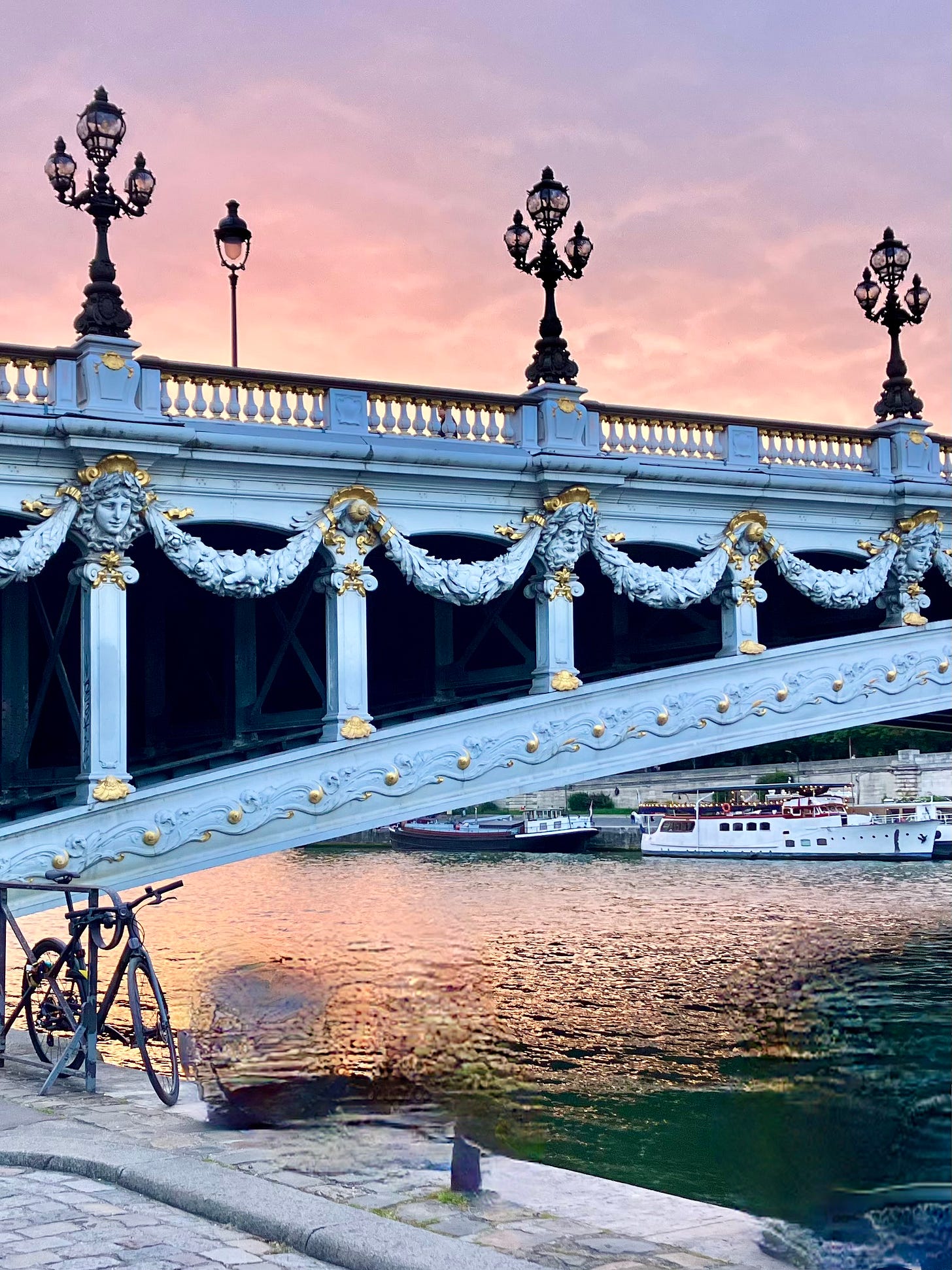
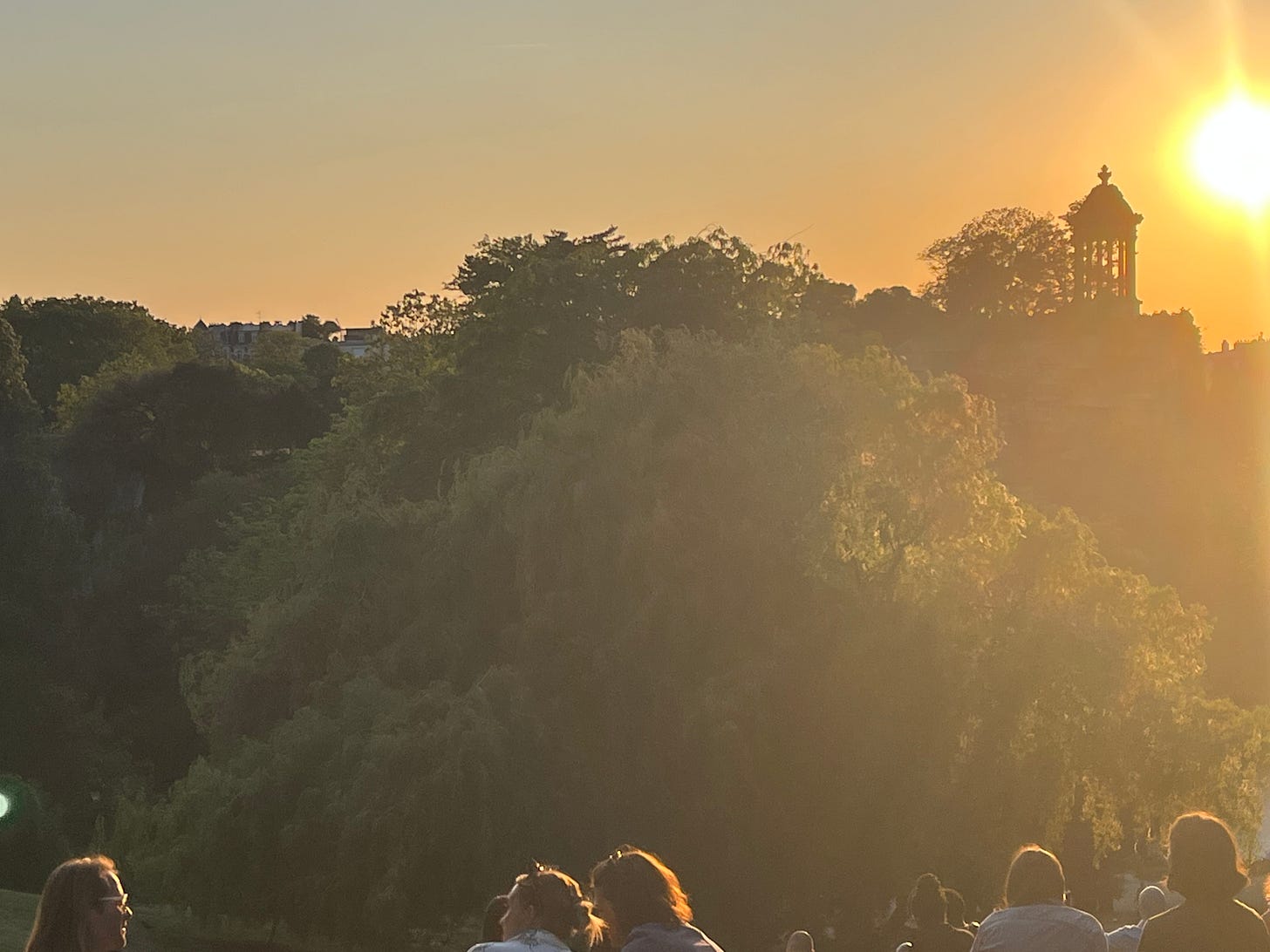
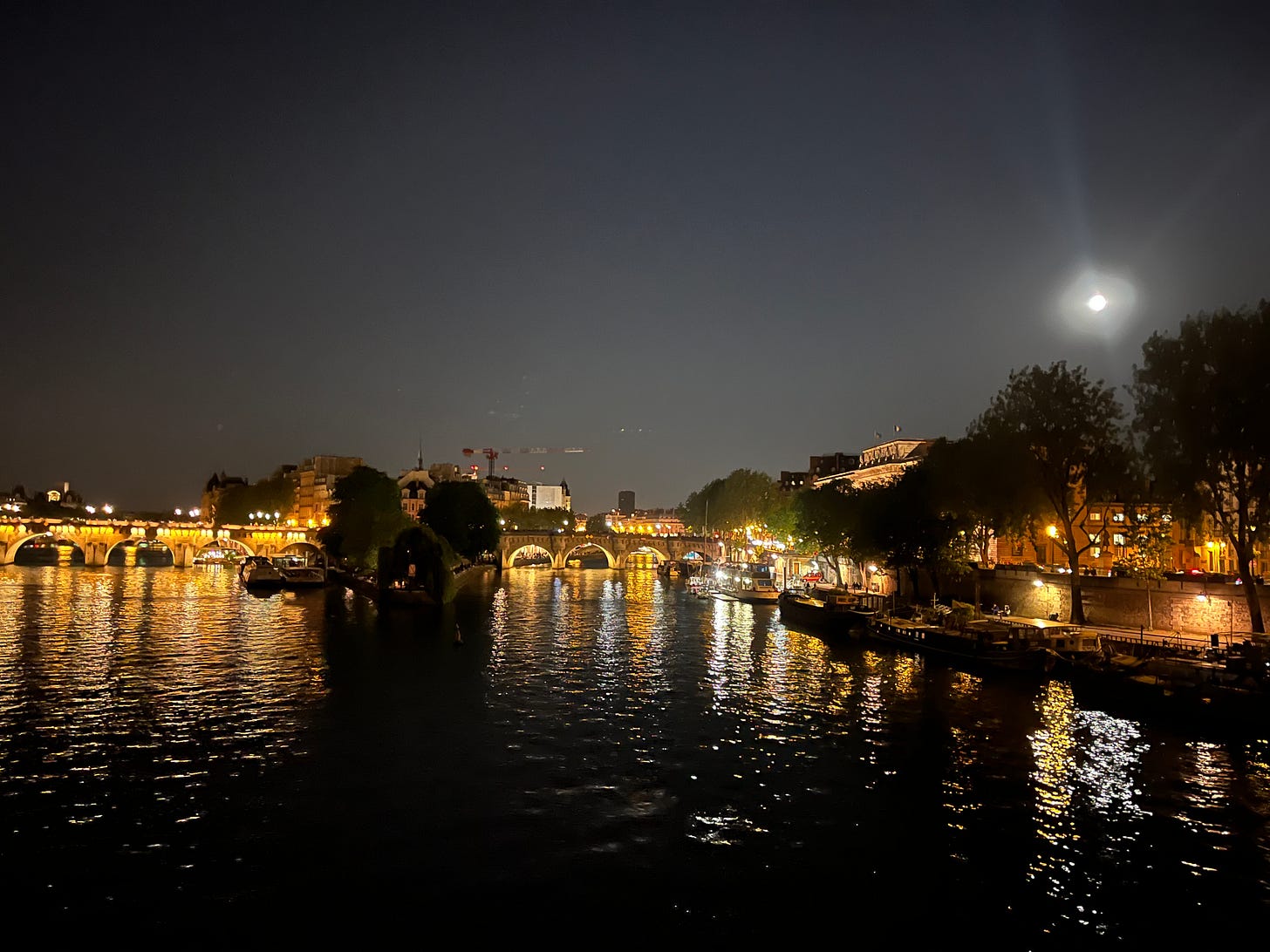
Here in Bloomington, Indiana, the rain is pouring and skies are grey. What a delight to read your travel tales as I listen to the coffee perking. I saved the photo of the donkeys wearing their pants to show my little granddaughters. Our neighbor, Hannah Kasak, recently finished her Fulbright study doing climate research in Ghana. Now her mom tells me that Hannah is headed to do more climate research in the Netherlands. It would be funny if you two met some day in your professional capacities. Meanwhile, I am contemplating what to plant in an empty section of the garden ... something the deer won’t eat. Love, Lynne